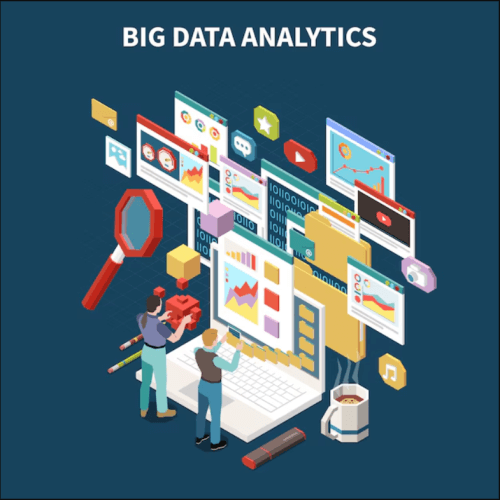Involve processing and analyzing large volumes of data to gain valuable insights and make informed decisions.
2
Data Collection and Storage
We identify sources of data, which can include structured, unstructured, and semi-structured data.we Choose appropriate data storage solutions, such as data lakes, data warehouses, or NoSQL databases.
We utilize technologies like Apache Hadoop, Apache Spark, or cloud-based services to process and transform data.we Perform tasks like data cleaning, transformation, and enrichment to prepare data for analysis.
We integrate data from various sources to create a unified view for analysis.we Implement Extract, Transform, Load (ETL) processes to consolidate data.
5
Analytics Tools and Techniques
We use analytics tools like Python, R, SQL, and machine learning libraries to analyze data.we Apply descriptive, diagnostic, predictive, and prescriptive analytics techniques.
We create meaningful visualizations and dashboards to convey insights effectively.weTools like Tableau, Power BI, and D3.js can help visualize complex data.we Design solutions that can scale to handle increasing data volumes and processing demands.we Consider cloud-based solutions for elastic scalability.
We implement real-time data processing to extract insights from streaming data sources.we Use technologies like Apache Kafka and Apache Flink for real-time analytics. Data Privacy and Security:we Ensure compliance with data privacy regulations and implement security measures to protect sensitive data.we Anonymize or pseudonymize data to maintain privacy.
Align analytics efforts with business goals and identify key performance indicators (KPIs) to measure success.Formulate hypotheses and perform statistical tests to validate assumptions and conclusions.
9
Machine Learning and AI
Utilize machine learning algorithms to uncover patterns and insights from data.Apply AI techniques for advanced analytics, prediction, and classification. Data Governance:Establish data governance policies to ensure data quality, consistency, and compliance.
Conduct A/B tests to compare different strategies and make data-driven decisions.Explore opportunities to monetize data by offering data-driven services or insights to external parties.Continuously refine data collection, processing, and analysis strategies based on feedback and changing needs.:Assemble a multidisciplinary team including data scientists, analysts, engineers, and domain experts.






